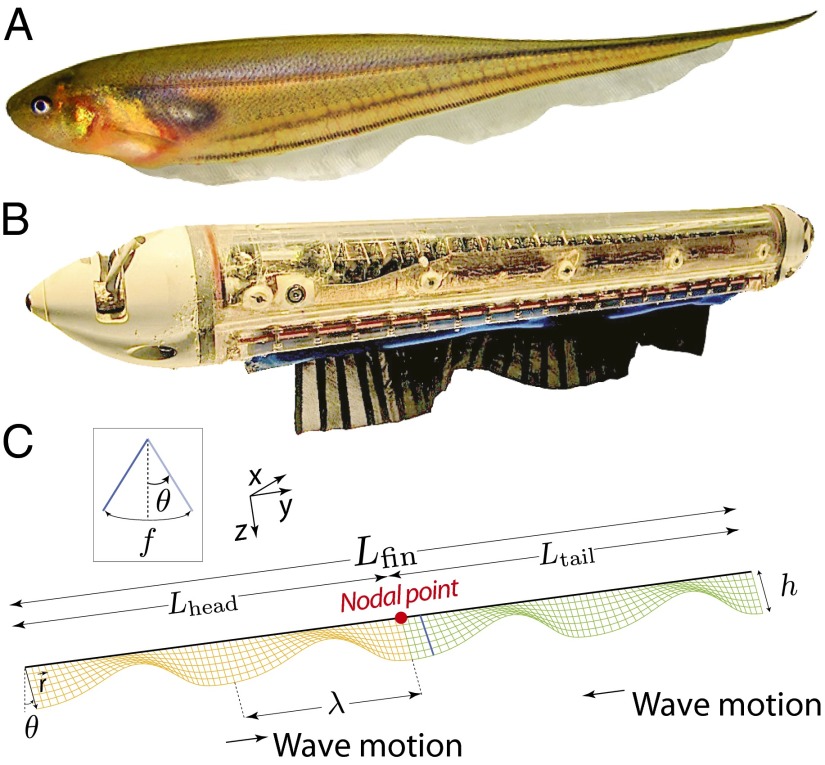Fig. 1.
Three testbeds considered in this paper include the glass knifefish, a biomimetic robot, and a model of the swimming dynamics. (A) The glass knifefish E. virescens. Experiments with a biomimetic robot match force measurements predicted by a computational model of ribbon fin propulsion. (B) A biomimetic robot that has a ventral ribbon fin to emulate the fin of knifefish. The biomimetic robotic fin consists of 32 independently controlled rays, allowing for a wide range of fin kinematics, such as counterpropagating waves. (C) Fin is modeled as a pair of inward-traveling waves. Directions of head and tail waves and kinematics of the ribbon fin are shown in this schematic: angular deflection (θ), wavelength (λ), lengths of the two waves (Lhead and Ltail), length of whole fin (Lfin), temporal frequency (f), and nodal point (red circle).

